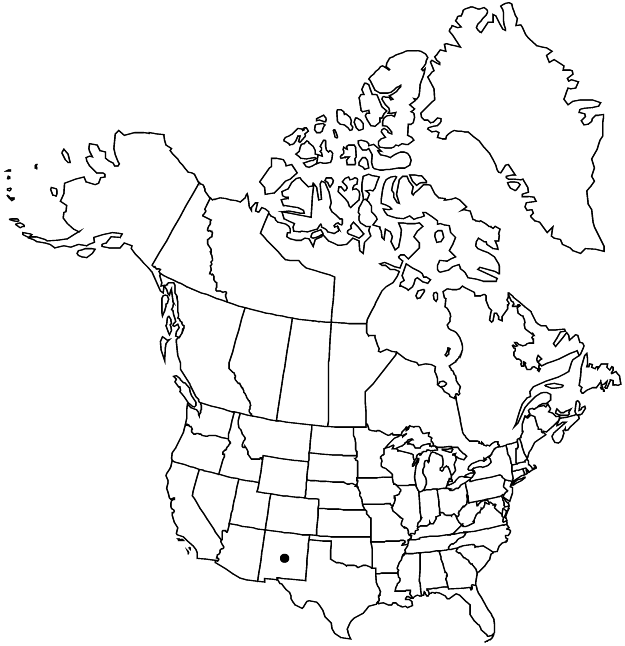Heuchera wootonii
in N. L. Britton et al., N. Amer. Fl. 22: 113. 1905 ,.
Herbs, acaulescent; caudex branched or unbranched. Flowering stems 4–60 cm, long stipitate-glandular. Leaves: petiole long stipitate-glandular; blade orbiculate, shallowly 5–7-lobed, 4–7 cm, base cordate, lobes rounded to ovate, margins dentate, apex obtuse, surfaces glaucous, long stipitate-glandular along veins abaxially, glabrous adaxially. Inflorescences dense. Flowers: hypanthium radially symmetic, free 0.5 mm, green, flat, saucer-shaped, 2–3 mm, short stipitate-glandular; sepals reflexed, green-tipped, (triangular), equal, 0.5 mm, apex acute; petals reflexed, white, widely elliptic, (clawed), unlobed, 1 mm, margins entire; stamens included 0.5–0.8 mm, (incurved over stigmas); styles included 1–1.5 mm, 0.5 mm, 0.1+ mm diam. Capsules oblong, ca. 6 mm, beaks divergent, not papillose. Seeds dark brown, fusiform, 0.7 mm.
Phenology: Flowering Jun–Sep.
Habitat: Rocky slopes
Elevation: 2100-3700 m
Discussion
Heuchera wootonii occurs in the Sacramento and White mountains of south-central New Mexico. It resembles H. parvifolia.
Selected References
None.
